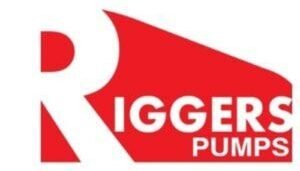Hydrotesting is an essential process for ensuring the integrity and safety of various types of industrial equipment that operate under high pressure or store hazardous materials. Below is a list of industrial equipment that typically requires hydrotesting:
1. Pressure Vessels
- Boilers
- Heat exchangers
- Reactors
- Autoclaves
- Steam drums
- Air receivers
- Condensers
- Chemical storage tanks
2. Pipelines
- Oil and gas pipelines
- Water supply pipelines
- Chemical transport pipelines
- Natural gas distribution lines
- Sewer and drainage pipelines
3. Storage Tanks
- LPG (Liquefied Petroleum Gas) tanks
- LNG (Liquefied Natural Gas) tanks
- Fuel storage tanks
- Cryogenic storage tanks
- Chemical storage tanks
4. Hydraulic Systems and Components
- Hydraulic cylinders
- Hydraulic hoses and tubing
- Hydraulic manifolds
- Hydraulic accumulators
- Hydraulic fittings and connectors
5. Valves and Piping Components
- Gate valves
- Ball valves
- Butterfly valves
- Check valves
- Relief valves
- Piping elbows, tees, and reducers
6. Heat Transfer Equipment
- Shell and tube heat exchangers
- Plate heat exchangers
- Chillers
- Furnaces
7. Compressed Air Systems
- Compressed air receivers
- Air tanks
- Compressed gas cylinders (oxygen, nitrogen, etc.)
8. Firefighting Equipment
- Fire suppression system pipelines
- Fire hydrants
- Firefighting water tanks
- Sprinkler system piping
- Fire extinguishers (especially high-pressure types like CO2 systems)
9. Steam Systems
- Steam boilers
- Steam piping
- Steam drums
- Superheaters
- Condensate return tanks
10. Heat Exchanger and Condenser Tubing
- Steam turbine condenser tubes
- Air-cooled heat exchangers (ACCs)
- Water-cooled condenser tubes
11. Gas Cylinders and Tanks
- High-pressure gas cylinders (oxygen, nitrogen, argon, etc.)
- Compressed natural gas (CNG) cylinders
- Carbon dioxide cylinders
12. Offshore Equipment
- Offshore oil and gas platform piping
- Subsea pipelines
- Offshore storage tanks
- Blowout preventers (BOPs)
13. Pumps and Pump Systems
- Centrifugal pumps
- Positive displacement pumps
- High-pressure water pumps
- Boiler feed pumps
14. Heat Recovery Steam Generators (HRSGs)
- HRSG pressure components
- Feedwater heaters
- Economizers
15. Nuclear Plant Components
- Reactor pressure vessels
- Steam generators
- Nuclear reactor coolant piping
16. Drilling Equipment
- Mud pumps
- High-pressure hoses
- Drilling risers
- Blowout preventers (BOPs)
17. Power Generation Equipment
- Turbine casings
- Steam piping systems
- Feedwater heaters
18. Fuel Systems
- Fuel transport pipelines
- Fuel storage tanks
- Fuel delivery systems for power plants
19. Cryogenic Systems
- Cryogenic storage tanks
- Cryogenic pipelines
- Cryogenic vessels for liquefied gases
20. Pharmaceutical and Food Processing Equipment
- Sterilization tanks
- Autoclaves
- Pharmaceutical reactors
- High-pressure homogenizers
21. High-Pressure Vessels for Chemical Processing
- Polymerization reactors
- Chemical reactors
- High-pressure gas separators
22. Ammonia and Refrigeration Systems
- Ammonia storage tanks
- Refrigeration compressor vessels
- Ammonia transport pipelines
23. Marine Equipment
- Ballast water tanks
- Marine fuel tanks
- High-pressure piping on ships
24. Desalination Plant Equipment
- Pressure vessels for reverse osmosis
- Brine discharge pipes
- High-pressure pumps for water desalination
25. Water Treatment Plant Equipment
- Water storage tanks
- Water distribution pipelines
- High-pressure filtration units
Conclusion
The hydrotesting process is essential for ensuring the leak-tightness, safety, and structural integrity of the above equipment, which operates under high-pressure or carries hazardous materials. Regular hydrotesting is a preventive measure that helps to avoid catastrophic failures, equipment downtime, and environmental hazards, ensuring that the systems and components perform safely under the intended pressure conditions.

